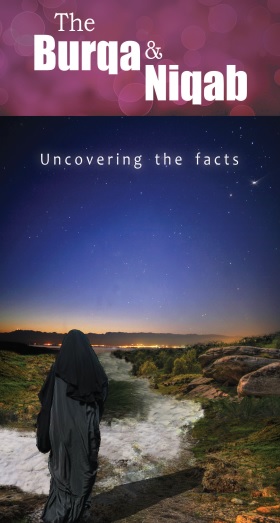The Burqa & Niqab – Uncovering the Facts
The burqa and niqab have become a topic of much controversy and heated debate. A number of countries have banned the wearing of these religious garments, while others have considered banning or limiting their use.
Many arguments have been made against the wearing of the burqa and niqab, claiming they are anti-social, backward, oppressive, and not part of Islam. This pamphlet discusses the burqa and niqab from an Islamic viewpoint and addresses the many concerns and allegations made against the wearing of these garments.
Types of Islamic Dress
“O Prophet! Tell your wives and your daughters, as well as all believing women, that they should draw over themselves some of their outer garments [when in public]: this will be more conducive to their being recognised as decent women and not molested.” Quran 33:59
There are three main types of Islamic dress relating to women when in public:
-
Hijab: This is the most common type of Islamic dress, which covers the woman’s body, leaving only her face and hands visible.
-
Niqab: This type is like the hijab, except it also covers part of the face, leaving only the eyes visible.
-
Burqa: This type is the least common, and involves covering the whole body as well as covering the face with mesh, so that the eyes are not visible.
